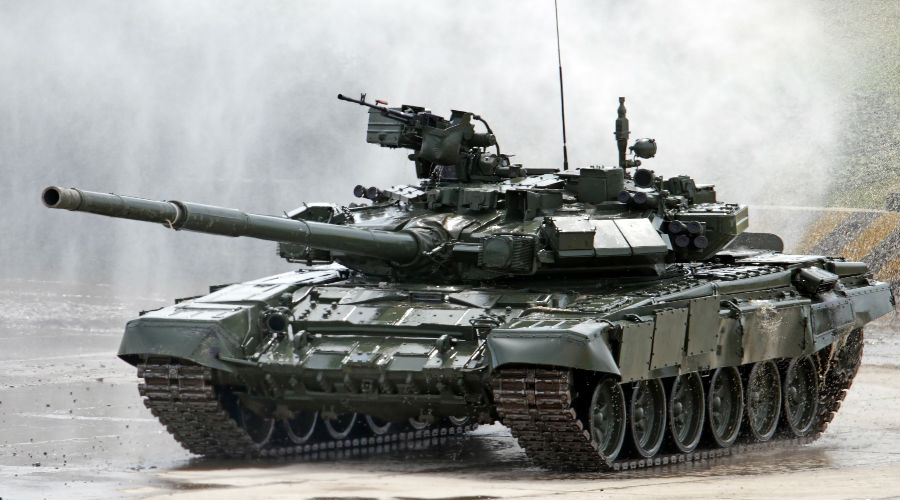Indicators of the region’s arms race have increased for the fifth consecutive year due to several recent developments. Most notably, the growing threat posed by ISIS and other regional terrorist groups, the lifting of international sanctions on some countries, and continued chronic regional crises. All these factors indicate the reasons for the escalation in arms purchases, as noted by several relevant international reports. However, it is noteworthy that there are new regions with unprecedented levels of armament, such as North Africa. In countries such as Morocco and Algeria arms deals are conducted in order to achieve foreign policy goals.
Various reasons
The factors that contribute to many regional countries signing military deals include:
1- Growing terrorist threats: Some countries are upgrading their military capabilities to address the threat posed by continued terrorist attacks, especially ISIS and Al-Qaeda. These groups are now looking for new areas to establish terrorist hotbeds, as they lose ground and suffer high material and personnel losses in previously held areas—particularly Iraq and Syria.
Experts believe that Algeria has signed several new military deals in part due to growing terrorist threats emanating from neighboring crisis countries, particularly Libya and Mali. ISIS has previously attempted to carry out terrorist attacks inside Algeria, such as the failed suicide bombing of a police station in the city of Constantine on February 26, 2017.
2- Removal of sanctions: Iran quickly moved to take advantage of the lifting of sanctions in mid-January 2016 after it signed a nuclear deal with the 5+1 Group in July 2015. Reports, in November 2016, revealed that Iran may hold talks with Russia to sign military deals worth $10 billion. It is important to note that Iran in 2010 lost a deal for a S-300 missile system after Moscow canceled the contract to deliver S-300s to Iran under pressure from the West.
Iran may seek other deals in the near future, especially as tensions escalate with the Trump Administration over the nuclear deal and accusations of state-sponsored terrorism. Tensions are particularly heightened as the US administration is once again threatening not to rule out any tough options in dealing with Iran.
Additionally, ongoing efforts to reach a settlement between the Libyan army and their Libyan rivals could result in the removal of the 2011 sanction on the army, and thus generate new military deals to confront growing threats by terrorist and armed militias.
3- Continuation of chronic problems: The Western Sahara territory is at the heart of a historic dispute between Morocco and Algeria. According to several reports, it is the main reason why both sides have signed several military deals with various world powers. A report by the Stockholm International Peace Research Institute published on February 20, 2017, stated that Algeria is the leading African country in arms deals. Its military imports account for 46 per cent of overall African imports and 3.7 per cent of net arms sales on the global market. Morocco ranks second in Africa, with 15 per cent of the arms imports on the continent.
Future Indicators
The rise in military deals in the region is linked to several key indicators. First, the growing possibility that Russia will become a key player in new deals in the near future. Not only has it signed deals with Iran, but there are also reports that Turkey is interested in purchasing the S-400 air defense missile system from Russia. It is likely that Russia will play a major role in re-arming the Libyan army if sanctions are lifted, since it is currently pushing for a settlement among Libyan rivals to achieve this. Several estimates indicate that Russia could sign military deals worth $14 billion in 2017, which, without a doubt, are based on Russia’s focus to test out its weapons in Syria after it became militarily involved in the Syrian conflict in September 2015.
Secondly, the growing demand for air defense systems such as the S-300, a feature of several Russian deals, and the S-400, which could be part of an arms deal between Russia and some regional powers, such as Turkey.
Additionally, there could be a trend of upgrading naval armaments in light of several threats facing key maritime routes in the region, such as the Bab Al-Mandab Strait and Strait of Hormuz. Iran has hinted at establishing naval bases in Yemen and Syria, according to statements made by Iran’s Chief of Staff of the Armed Forces Mohammad Bagheri on November 26, 2016. Moreover, regional powers, as well as terrorist and armed groups, have developed a growing interest in the use of drones, this is evident in Syria. This could push for more deals for drones.
In conclusion, armament indicators in the region are linked to many variables, most notably the possibility of reaching political settlements soon on various regional conflicts, as well as the possible paths of the war on terrorist organizations – particularly ISIS.


